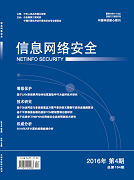In this paper, taking the sina microblog as the study, the method of extracting forwarding path of microblog information is analyzed, and microblogging users who play a key role in the process of micro-blogging message forwarding can be obtained. By utilizing multiple accounts and distributed multi-thread technology, the new network crawler frame used in this system can bypass the sina microblog anti crawler mechanism function and has high stability and high efficiency. There are several steps when researching the extracting method of forwading path, including crawling forwarding webpage information of microblog, extracting the message forwarding information, preprocessing the forward information, constructing the forwarding path tree, etc. The system can show the spread graph of a microblog message forwarding by extracting and organizing the path forwarding information to tree state structure information. Finally, the system implements the algorithm of calculating the user,s spreading influence, and can quickly estimate the user's influence in the whole process of the forwarding and propagation of the microblog by improving the PageRank algorithm.

